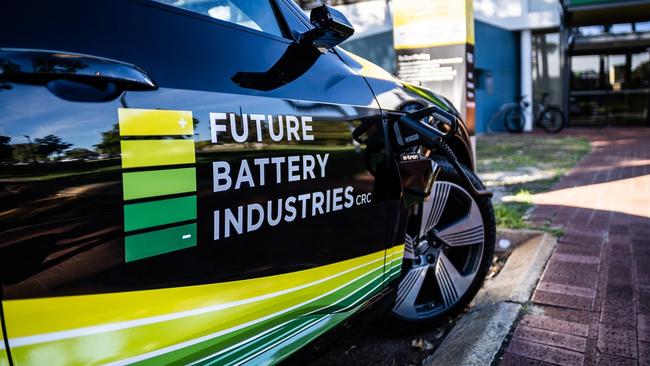Australian battery manufacturing sector a step closer with FBICRC precursor pilot plant
The project hopes to end Australia’s consistent failure to take opportunities to add value to the minerals we export.

Australian battery industry research is set to take a significant step forward on Monday as the sector launches its first pilot manufacturing plant to produce key precursors for use in electric batteries.
For the next 18 months researchers and industry professionals working under the banner of the Future Industry Battery Cooperative Research Centre (FBICRC) will use Australian-produced nickel, cobalt and other materials to refine manufacturing techniques needed to produce cathode precursors at scale.
FBICRC chief executive Shannon O’Rourke told The Australian the pilot manufacturing centre would produce about 8kg of precursors a day – about three tonnes a year – in the first major scale-up of battery-making techniques for the industry.
FBICRC is backed by a swath of Australian and international mining and technology companies, including BASF, BHP’s Nickel West Division, IGO and Cobalt Blue. It is also backed by the CSIRO and major universities including Curtin and the Queensland University of Technology.
Mr O’Rourke said that while the volume of precursors produced in the Perth-based facility would be relatively low, the pilot plant was a necessary step before moving to an industrial-scale pilot. He said it would help the industry to establish a consistent process for the technically challenging precursor manufacturing process.
In addition to the researchers and scientists working directly on the pilot, all of the 19 companies that had so far contributed to the FBICRC would have the right to access the data produced, and many were also keen to have their staff work with, and learn from, the scientists and engineers running the pilot plant, he said.
“There are two key benefits that the participants get when they participate in the project. The first is they get to work with the facility …” he said.

“The second thing is the intellectual property that’s created throughout the life of the project – all of the participants have equal and full access to the intellectual property. At the end of the project, the participants share in the value of that IP to the extent of their contribution.”
While Australian governments and industry – and the broader public – were extraordinarily keen to establish an Australian battery manufacturing sector as quickly as possible, Mr O’Rourke said, the complex nature of the chemistry involved meant that Australia needed to build up its own expertise to ensure the industry could be established successfully.
Mr O’Rourke said the chemistry was so complex that the failure rate of batteries produced in the international “giga factories” that fed the global electric vehicle industry was as high as 20 per cent.
“This first phase is primarily all about consistency. So we’ve already produced precursors at lab-scale successfully. This plant will enable us to move from that lab-scale through to the first step out of that. And we need to make sure that we get the parameters right and then run them consistently. So it’s a capability building exercise,” he said.
“If you skipped the scale step, and you didn’t produce the right result, you’d be lost.”

The precursor materials produced in Perth will be sent to QUT for further refinement to produce cathodes, and eventually to produce homegrown batteries for research purposes.
The $18m project will run for the next 18 months, and Mr O’Rourke said the FBICRC has had a warm reception for its future plans from the new federal government of Prime Minister Anthony Albanese, and was still hopeful of winning support for a $750m battery research and development institute the FBICRC says will be needed to scale up the Australian industry further by establishing an industrial-scale manufacturing plant.
“We’re moving from gram scale at the laboratory bench, to kilogram scale – which is what this facility is – through to tonne scale at an industrial pilot,” he said.
Australia can compete in manufacturing. With this facility we will have greater capability. We’ll be able to undertake rapid prototyping and we’ll be training the workforce of the future – I think it’s going to happen sooner than everyone thinks.”








To join the conversation, please log in. Don't have an account? Register
Join the conversation, you are commenting as Logout